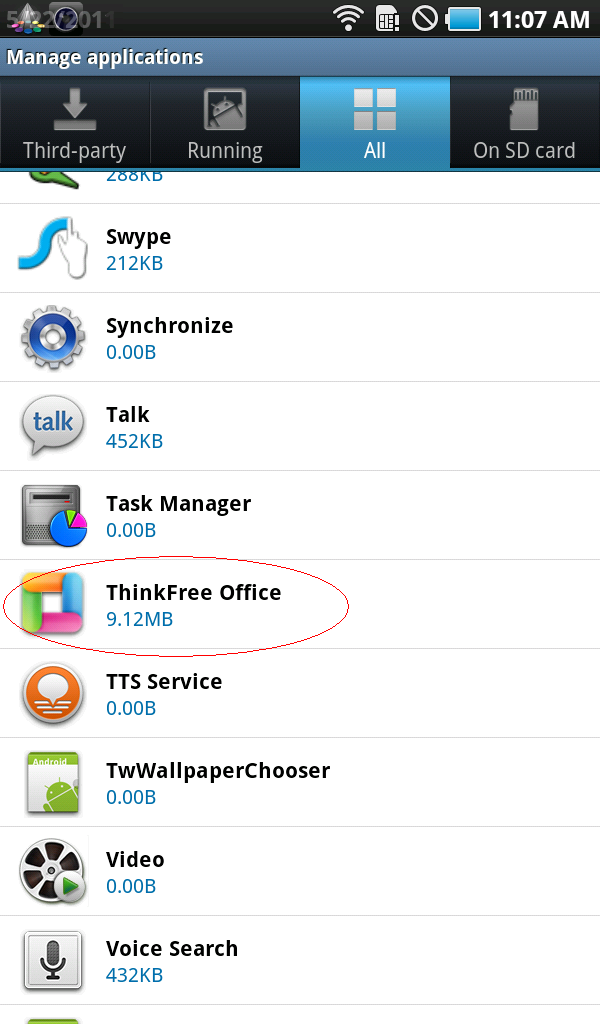

The Vibrant comes with Samsung’s customized user interface, called Touchwiz 3.0 / S-Life that runs on top of Android 2.1. It’s easy to see why T-Mobile threw Avatar on the device, the Super AMOLED display is a truly stunning, gorgeous screen. Upon first site, you’ll notice that the display is very bright and and the picture sharp, but it’s when you start watching videos on the Vibrant that you really start to see what the fuss is all about. Not only that, it provides a crisper picture, is even more energy-efficient, and suffers less reflection and glare in sunlight. The Vibrant sports a 4-inch Super AMOLED display, which is much thinner than standard AMOLED screens. This is somewhat present in the Vibrant, but it’s much better than the previous, failed T-Mobile Android phone. The haptic feedback on the Behold 2 was horrible, it made the whole device vibrate, making the device sound hollow all the way through. Having owned the Samsung Behold 2 for a couple of weeks – one of the most unfortunate experiences I’ve ever had on a phone – I was worried that the Vibrant would suffer from a very small quirk. You can thank the heavy use of plastics for the light in-hand feel. This thing is light, and may surprise you the first time you pick it up. The Vibrant comes in at 4.82” x 2.54” x 0.39”, and weighs 4.16 ounces.

Why it took so long for someone to think this up is beyond me, but it’s a great implementation. Instead of the plastic cover you have to pull out every time to charge the phone, Samsung has replaced it with a small slider that is easy to open and close. On the bottom of the Vibrant, you’ll only find the hole for the microphone, because the charging port is on the top, next to the 3.5 mm headphone jack. It took me a while to get used to the new location for the lock button, but I eventually got used to it though I’m still not in love with its placement. The volume rocker finds a home on the left side of the handset, and the Power/end button resides on the right side. The Vibrant, along with all other Galaxy S variants have had their button configurations modified from that of the original, to the standard set of Android buttons, menu, home, back, and search. All other functions are handled by the capacitive touch buttons on the front face. The only real buttons you’ll find on it is the volume rocker and the power/lock button. Something you won’t find a lot of on the Vibrant? Physical buttons. You can thank the plastic battery cover for this, but it’s actually very easy to slip the Vibrant into and out of your pocket probably easier than I’ve seen on a device before. It’s so slippery, in fact, that I dropped the thing twice in my first two days playing with it.

The over all feel of the Vibrant is very plastic-y. The Vibrant is completely void of hard lines, and goes with curves throughout the whole design. The Vibrant is about as thin as the Motorola Droid X, but thanks to its curved edges, it’s easier to get a grip on and looks thinner. It may not be the thinnest smartphone, but it does the job very well. It’s when you pick the Vibrant up that you get a sense of how thin it is. Coming in at just 9.9mm thick, with the exception of the hump on the bottom of the backing, it almost looks thicker than it is. That said, the Galaxy S device looks painfully close to an iPhone 3G. I like that the Vibrant remains close to the design aesthetic of the original, but that’s just my personal opinion. The Vibrant is the only variant that doesn’t have a completely different hardware design from the original Galaxy S. A little too similar to iPhone in UI representation.S-Life / Touchwiz 3.0 UI will delay upcoming Android updates.Unique sliding door cover for microUSB port.Samsung provides some pretty cool widgets with its S-Life UI.



 0 kommentar(er)
0 kommentar(er)
